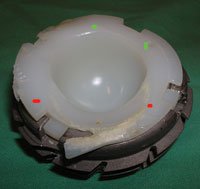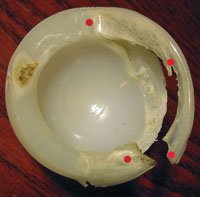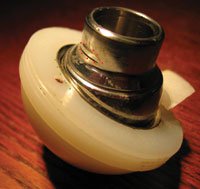Prosthetic impingement is common and preventable in hip replacement, study finds
French university study cautions surgeons to beware of impingement in patients with high range of motion.
An observational study of the frequency and severity of prosthetic impingement in total hip arthroplasty found that impingement occurs in nearly 60% of hip replacements, one-third of which were rated as having severe impingement.
“Impingement is a frequent phenomenon in cup retrievals that is underestimated,” Henri Migaud, MD, told Orthopedics Today. “It is a devastating complication for hard bearings that may explain the high failure rate with some of these components. Impingement after soft bearing use is usually clinically silent, but should be considered as a major cause of failure in conventional hip replacement. The improvement in wear resistance has a limited effect to reduce the consequences of impingement.”
Factors for removal
In the study, presented at the 12th EFORT Congress 2011, researchers at the Lille University in France analyzed 311 cups retrieved from total hip arthroplasties (THAs) performed by a single surgeon between 1989 and 2004. Of the 416 cups retrieved, 105 were either a combination of bipolar resurfacing cups or severely damaged and unfit to be analyzed. Two researchers analyzed the notching at the cup rim for each retrieval using optic magnification. The risk factors and severity of impingement were studied using X-rays and clinical files.
|
|
|
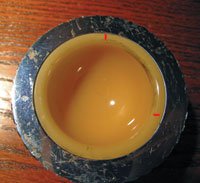 |
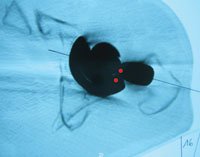 |
|
Ceramic-on-ceramic bearing with posterior impingement diagnosed on preoperative CT scan (right, four red spots) confirmed on retrievals with metal deposit on ceramic rim from the titanium femoral neck (left, red spots). Images: Migaud H |
|
Main factors that necessitated removal of the cups included loosening in 131 cases, infection in 43 cases, instability in 56 cases, osteolysis in 28 cases and unexplained pain in 48 cases. Prosthetic impingement was deemed necessary for removal of the cup in five cases (1.6%), which only had bearings, meaning that impingement was not expected in 98.4% of cases, the authors wrote.
The results also showed that impingement was more frequent when the sum of hip motion exceeded 200°. A younger age at the time of surgery, use of skirted heads, liners with an elevated rim and a head-neck ratio below two were determined to be additional risk factors for impingement. Traditional factors such as cup inclination, duration of time before retrieval and indication for primary prosthetic replacement were not found to correlate with impingement, according to the study.
|
|
|
Steps to avoid impingement
“The problem is how to manage those hips at risk of impingement because of [the] normal-subnormal range of motion,” Migaud said in the presentation. “One should increase the head-neck ratio using large diameter heads or cups. We should avoid elevated rims and skirted heads in these indications and use with caution hard bearings that are very sensitive to impingement.”
Migaud also stated that the use of computer-assisted surgery, which could help orient the cups according to the patient’s range of motion, would also reduce impingement and prevent dislocation. – by Jeff Craven
References:
- Migaud H, Marchetti E, Bocquet D, et al. Rate and risk factors of prosthetic impingement after THA: Observation of 311 cup retrievals. Paper #786. Presented at the 12th EFORT Congress 2011. June 1-4. Copenhagen, Denmark.
- Marchetti E, Krantz N, Berton C, et al. Component impingement in total hip arthroplasty: Frequency and risk factors. A continuous retrieval analysis series of 416 cups. Orthop Traumatol Surg Res. 2011;97:127-133.

- Henri Migaud, MD, can be reached at the Centre Hospitalier Régional Universitaire de Lille, 2 Avenue Oscar Lambret, 59037 Lille Cedex, France; 03-20-44-68-28; email: h-migaud@chru-lille.fr.
- Disclosure: Migaud has no relevant financial disclosures.


